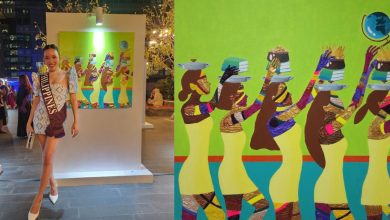The UAE’s Hope probe has shared new images of Mars, as it continues its journey of discovery around the Red Planet.
The craft sent back two images to Earth of atomic hydrogen – hydrogen that is separated into separate atoms rather than existing in molecular form – surrounding the Mars.
The spacecraft’s Emirates Ultraviolet Spectrometer (EMUS) clicked these breathtaking images on April 24 and 25 over the course of 10 hours and 34 minutes after transitioning into its science orbit.
RELATED STORY: UAE, Japan form partnership to send rover to moon this 2022
Over the given period of time of 10 plus hours, the Hope Probe moved from being over the planet near noon and viewing the entire dayside, to being over the planet at dusk and seeing both the day and night side.
“These images will be used to reconstruct the 3D distribution of hydrogen and learn more about its production through the process of splitting water molecules by sunlight and its eventual escape to space,” the Emirates Mars Mission said.
On February 9, the UAE reached the furthest point in space in Arab history as its Hope Probe entered the Martian orbit. The spacecraft entered its science orbit on March 29. The EMM’s two-year science data collection will formally commence on May 23, with the data to be available globally in October.
READ ON: Emirates Mars Mission Hope Probe transitions to science orbit
The process of science data gathering consists of making repeated ‘passes’ around Mars and mapping each set of measurements to build a dynamic picture of the movement of dust, ice and water vapour throughout the planet’s atmospheric layers. In addition to measuring hydrogen, oxygen, carbon monoxide and ozone, the probe will capture variations in temperature.
The unique elliptical 25-degree orbit of the Hope Probe enables a planet-wide, high resolution sample to be taken every 225 hours (9.5 days). (AW)




